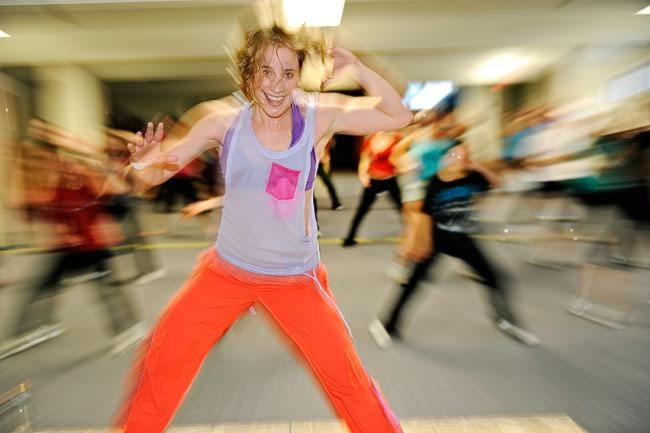By all indications, Haitians have no reason to sing and dance.
Already one of the most impoverished nations on the planet, the tiny Caribbean country was devastated by a 7.0 magnitude earthquake in 2010.
The disaster killed upwards of 220,000 people and left behind a destroyed capital and an outbreak of cholera.
But when Yukon public health nurse Alysha McFadden visited Haiti recently, she found a country that still hadn’t lost its groove.
“Dance is a huge part of life in Haiti. They love to dance,” said McFadden.
“It’s just a part of their culture.”
McFadden volunteered in a remote area in northern Haiti called Bod me Limbe.
Every Sunday, young girls in the village would get together to learn new songs and dances.
There was also a weekly voodoo ceremony that featured dancing that could go on for hours.
Back home in Whitehorse, McFadden wanted to hold a fundraiser for Haiti Village Health, the organization she had worked with.
“I wanted to do something different, something fun,” she said. “I asked myself, ‘How would Haitians do a fundraiser?’”
The answer: Zumba.
Which leads to another question - what the heck is Zumba?
Invented in the 1980s by a Colombian aerobic instructor named Alberto Perez, Zumba has grown into an aerobics craze that mixes the fun of a dance party with serious exercise.
The story goes that Perez showed up for a class one day, only to realize that he’d forgotten his standard aerobics music.
Searching his car for replacement tunes, he came up with a few tapes of traditional salsa and merengue. He improvised a class using this saucy music and the students loved it.
The enterprising Perez expanded the program to include other Latin and world musical styles like cumbia, mambo, flamenco, reggaeton, samba, belly dancing, bhangra, hip hop and tango.
It’s since swept the world, with millions of people practising it worldwide.
“It’s a mix of high cardio, social interaction and fitness with truly authentic music and rhythms,” said Whitehorse Zumba instructor Marlon Davis, who is helping McFadden organize her event.
“A lot of people are scared off because they think they can’t dance, but really that’s no excuse.
“As long as you like to have fun, and you like to be around a lot of sweaty women, you’re going to like it and you’re going to be able to do most of it.”
Men are allowed at the fundraiser and in the classes as well, of course.
But very few men are shaking their hips on the Zumba bandwagon.
“The few guys that do come love it,” she added.
Davis stands at the front of the class and does a few simple but strenuous dance moves while students follow along.
The class captures the fun of going out dancing all night, without the late nights, hangovers and pressure to look your best.
Davis was led to Zumba by a love for dancing.
“I learned to dance Salsa in clubs with the local Latin community in Edmonton,” she said.
“We used to go all the time, but there’s just a limit to how many nights a week you can go clubbing.”
The Haiti Zumba-thon will take place at Peak Fitness on Saturday from 10:30 a.m. to 12 p.m.
The suggested donation is $15 at the door and there’s room for about 50 dancers.
All proceeds will go towards Haiti Village Health, which works to reduce maternal and infant mortality.
It trains traditional birth attendants, provides them with safe birth kits and provides pre-natal outreach to screen for any problems. Its members make postpartum home visits.
Although the nonprofit was originally set up by a Canadian physician three years ago, most of the staff are Haitian - including doctors and nurses.
North American medical professionals, like McFadden, help supplement the staff and provide training if they need it.
McFadden helps with postpartum home visits and massive immunization campaigns. She does similar work in Whitehorse as a public health nurse.
“They deal with a lot of the same things that we deal with here in the North,” she said. “As a small remote area we have similar problems with resources and infrastructure and not having people with certain skills.”
Of course, the situation is far worse in northern Haiti.
That part of the country wasn’t directly affected by the 2010 earthquake, but a lot of people flocked there after the disaster to help.
And they brought with them a cholera epidemic.
The north was the hardest hit by this epidemic, said McFadden. “There’s no running water, a lot of the wells are contaminated, and there are not enough outhouses and latrines.”
Contact Chris Oke at
chriso@yukon-news.com
